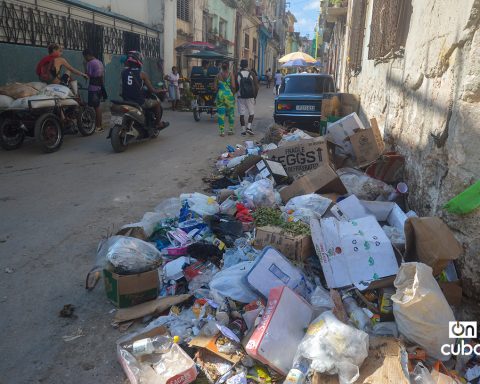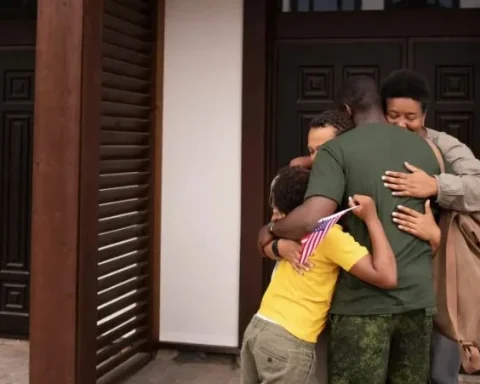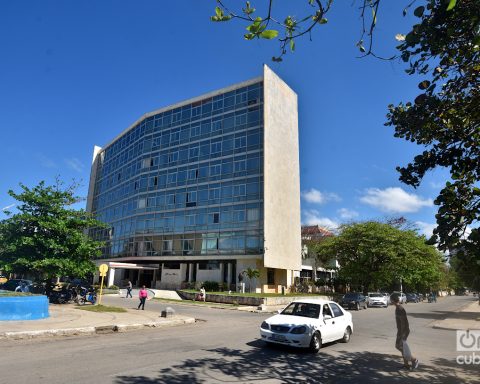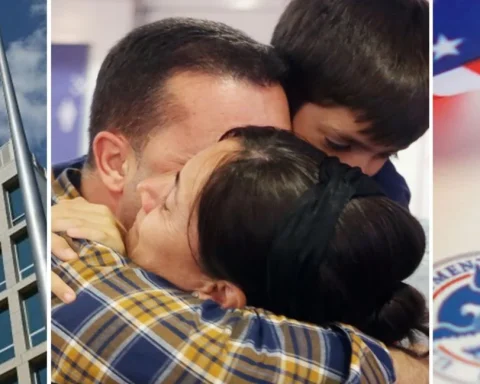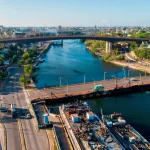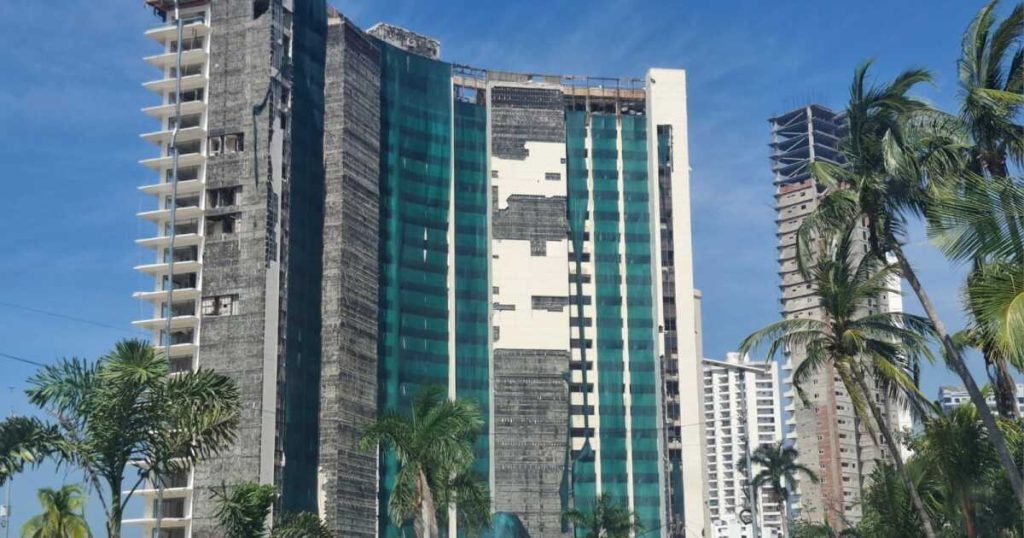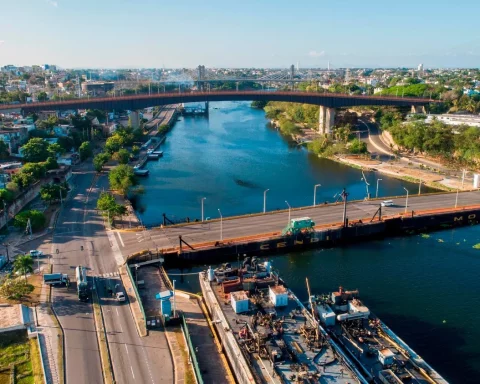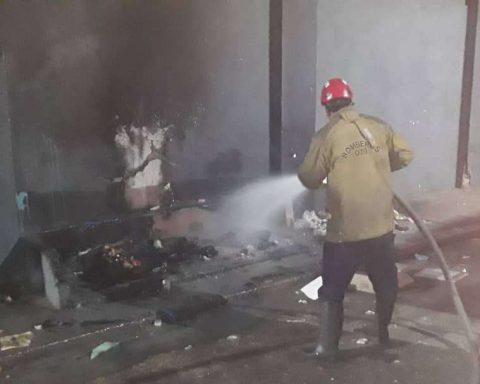SAN LUIS POTOSÍ, Mexico.- Although in the year of its inauguration, 1957, the Riomar buildingwith three blocks of 11 floors each and a total of 201 apartments, was considered one of the most imposing and elegant buildings in Havana, today it stars in a postcard of destruction and perishes under the lazy gaze of the Government, which does not offer a housing environment for residents in the building.
The once majestic infrastructure constructionlocated on 1st between 0 and 2, Miramar, included a lobby, reception, mailboxes, telephone board, party rooms, two swimming pools, six elevators and parking space for each of its apartments, among other amenities.
The project by architect Cristóbal Martínez Márquez had the Miramar Horizontal Property Mercantile Company SA as its first owner. However, the political turn that led to the rise of Fidel Castro and his group to power led many owners of the apartments to leave the country with the entry into force, in 1960, of the Urban Reform Law, which converted the site into public heritage.
a time bomb
Exposed to saltpeter and without plans of investment to prevent its deterioration, Riomar gradually gave in to the inclemency of the weather.
Despite its destruction and looking like the setting for a post-apocalyptic film, several Cubans live in the building.
Without having a place to live, people rejected by society and by their own family, and others arriving from different provinces, have decided to settle in Riomar.

Miguel Francisco, basement dweller
Miguel Francisco Reyes Blanco, 63, showed CubaNet the conditions of his improvised home and shared his story among the walls from Riomar.
Five years ago he lived in Playa but when his wife died, and after conflicts with his stepdaughter, he was left without a place to spend the night.
“Here I got in and Cubanacán gave me a letterwhere it was stated that I lived here under my responsibility,” he said. The Government, absolving itself of its responsibility for the lack of access to housing, does not offer them options to reside.
Reyes Blanco came to make the basement his new home. He has never had any conflicts there. A worker for the communal company, he was even in charge of cleaning the entire area of the building.
“But now my hand is ‘taught’ and I lost the machete. “I was the one who cleaned the area in the building,” he said.


A Cuban fight against the sea… and the rats
Of the three blocks of Riomar, the middle one is inhabited up to the fifth floor, since the upper area is closed. In the other buildings, people have concentrated on the first level and have established divisions to mark their space, on that shared floor. Higher levels also have access cancelled.
Living in the basement has not been easy for Reyes Blanco. The sea hits the interior and wets his mattress and his few belongings.
“The ‘boss’ told me: ‘Miguel, I’ll tell you anything, because I hear the news, so that you can take things over there, to where I alivethere, on the fourth floor’; because the water arrives here and gets wet here,” he expressed, indicating in a column the height that the water reaches when it penetrates.
The rodents have become a regular part of Miguel’s daily life, and he seeks strategies to avoid losing his food to these animals.
“The rats are here often. I have to keep everything covered, lock the door so that nothing gets in. They destroy everything,” he said.


Without a refrigerator, the man can only think about saving food for one day. His income from communal services and as a seller of raw materials to the State is not enough for an abundance of food either. The hash, as he explained, he pays for “three fifty a packet” and it lasts until the next day if he preserves it in vinegar.
“I do it there, more or less. And it lasts if I add vinegar, it lasts for another day. Since I don’t have a refrigerator, the vinegar allows me to eat it the next day,” he commented while showing his table and place where he eats food to the cameras.
Of the splendor of buildingpart of boom construction from the middle of the last century, there is only a site inhabited by subaltern groups, a stage for video clips and films and walls for the art of graffiti.
And the Government…
A decade ago, and in an interview with Havana Timesa resident of Riomar, the owner of her apartment, explained that by then 14 families were living in the ruined property.
“In these 20 years, we residents have not stopped writing letters at all levels requesting that they remove us from here and we have attached reports from structural engineers warning about the need to carry out urgent actions to repair and maintain the structure and they have not done so. case”. Only
On one occasion they listened to us and repaired a column in the basement. “I keep copies of all the letters and reports we have written,” he stated.
In 2001, the company Cubalse had proposed carrying out a restoration attempt to build offices. Under that excuse, they concentrated the owners in one of the blocks of the building.
Since then, the majority of the owners of those spaces began to live in apartments other than their own. “They don’t even legalize us or give us these properties in exchange for ours.”
Little by little other Cubans began to occupy spaces. And they all remain there, at risk.



